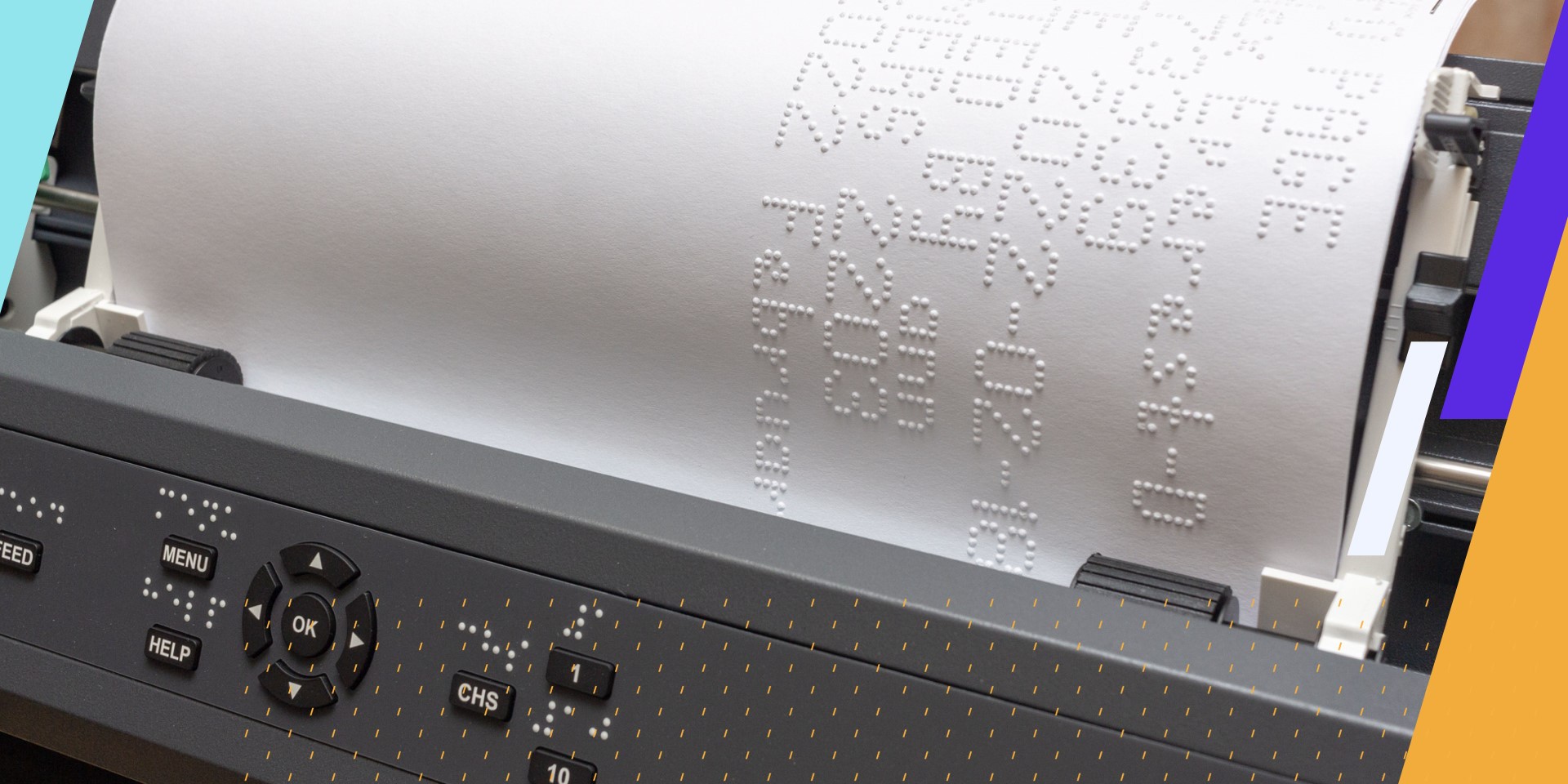The ability to read and write Braille is essential for people who are blind or visually impaired to communicate effectively. To create a Braille document, you must use a Braille printer.
Braille printers collect data from computer devices and emboss that data in Braille onto paper. These printers, also known as Braille embossers, typically print on heavyweight paper. Since Braille takes up more space than traditional print, Braille printers use more pages than regular printers to print the same information.
In this blog post, we will discuss Braille printers, their importance, and some of the primary types of Braille printers.
Why are Braille Printers and Braille Necessary for Inclusion?
As previously mentioned, Braille printers are necessary to create Braille documents. Although modern technology, such as screen reading software, has reduced the prevalence of Braille, many blind or visually impaired people still use it worldwide.
Braille documents have several advantages over screen readers. While screen readers narrate webpage content to users, Braille documents help people understand the layout and location of text on pages.
Braille creates a greater sense of equality, enabling blind and visually impaired people to experience text on pages just as sighted people do. This greater sense of equality can lead to higher self-esteem for blind and visually impaired individuals.
Braille is generally more useful than screen readers when learning highly visual content such as math. Since math uses many symbols to illustrate concepts, Braille codes can be used to understand these symbols.
Learning Braille can also lead to greater independence for blind and visually impaired people, as public places like airports or elevators often include Braille signage.
Knowing Braille has professional benefits, as well. About 85% of U.S. adults who read Braille are employed, according to The National Federation of the Blind. Being Braille-literate may also improve your chances of being hired, as employers might value these skills.
Types of Braille Printers/Embossers
Index V5
There are many different Braille printers, but the Index V5 Braille Embossers are some of the most common. V5 printers/embossers support tactile graphics as well as Braille. V5s include control panels that allow users to set up and use the embossers.
For customer support, V5 users have access to the remote support portal Index team. V5 printers/embossers also include Bluetooth support.
Porta-Thiel
The Porta-Thiel is another common Braille printer. It can be connected directly to a standard computer keyboard, allowing users to type Braille with it. The Porta-Thiel also offers the ability to adjust the distance between lines of characters on pages. In addition to U.S. English Braille, the Porta-Thiel can print Braille characters in German, Spanish, French, and British English.
Disadvantages of Braille Printers
Although Braille printers are very useful, they do have a few disadvantages. As mentioned earlier, Braille printers use more paper than regular printers to print the same information. As a result, Braille printers are often slower and noisier than regular printers.
They require special heavyweight paper that may be difficult to find. Additionally, Braille printers can be quite expensive, with large-volume Braille printers costing as much as $80,000. The exact price depends on the volume of Braille the printer can produce.
How Allyant Can Help
Do you have Braille-related questions? Allyant has several team members with a wealth of Braille knowledge. Even with technological advancements, Braille is still widely used by people who are blind or have vision loss. Understanding Braille has significant positive implications, both personally and professionally. If you have any questions, please contact us with your braille-related questions.

